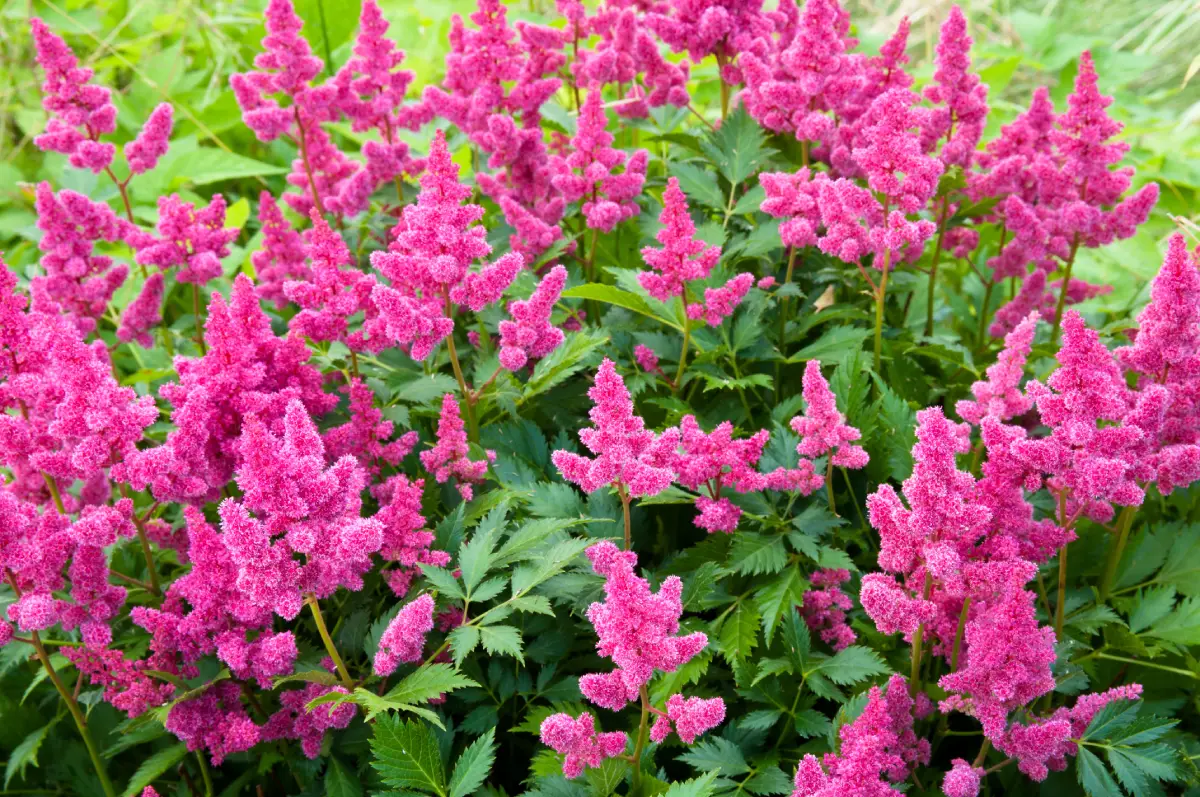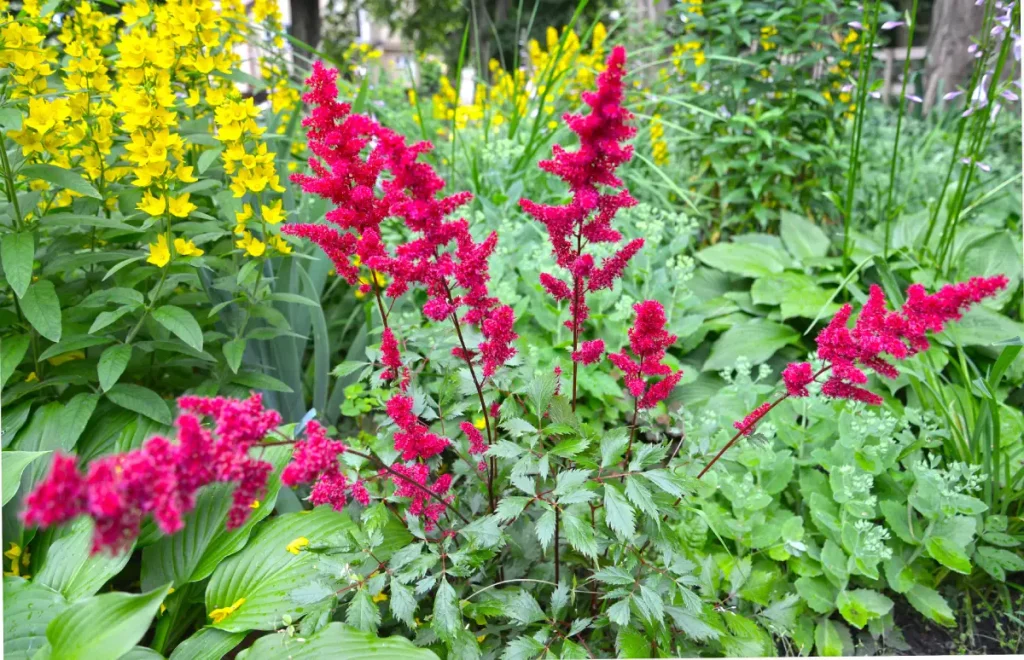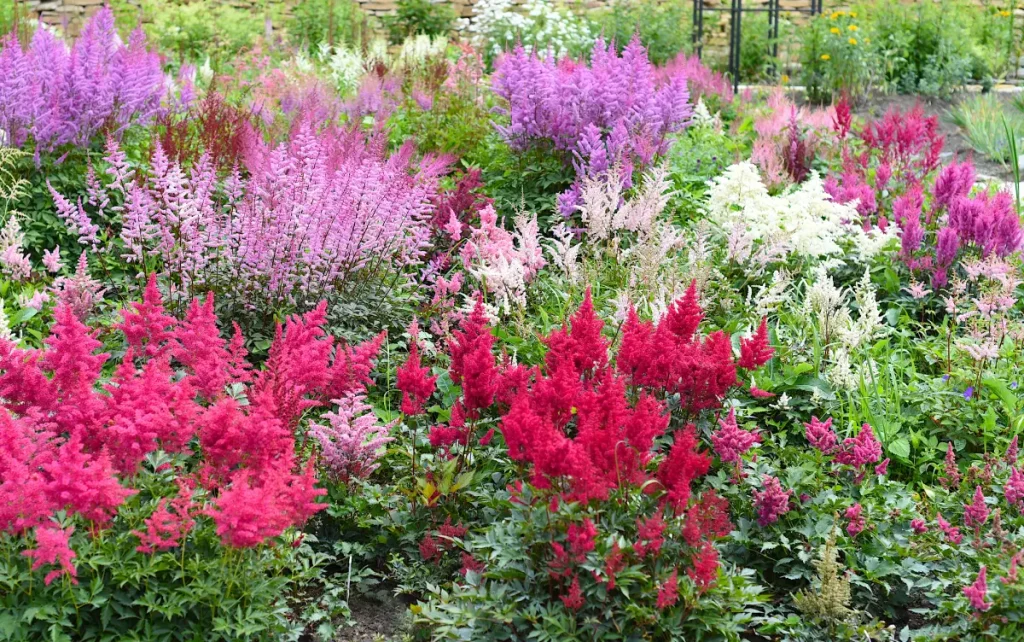
The Astilbe (also known as the Astilbe) is a perfect plant for shady spots. With their extraordinary appearance and bright colors, magnificent spars are a real eye-catcher in the garden.
It’s not always easy to find plants that thrive in the shade. Especially plants that also impress with their pretty flowers. But one can be found in almost every garden and is very popular there: the astilbe. This is a plant from East Asia that has multi-divided leaves and whose inflorescences are somewhat reminiscent of feathers.
Magnificent spars form a genus of perennial herbaceous plants within the saxifrage family (Saxifragaceae). Their big advantage for garden owners is that the plants require minimal light. Even the darkest corners breathe new life with their delicate inflorescences in white, pink or red.
Contents [ show ]
Appearance of flowers and leaves

The flowers of the magnificent spar grow like panicles. Their length varies from less than five to ten centimeters. Most astilbes have pink, purple or red flowers, but individual varieties such as the magnificent ‘Deutschland’ bloom in bright white. The overall impression of the flowers is delicate and delicate. The same applies to the plants’ multi-divided, beautifully serrated and sometimes finely hairy leaves.
| Japanese splendor ‘Bonn’ (Astilbe japonica ‘Bonn’) | |
|---|---|
| Growth: | clump-forming, upright, bushy |
| Wuchshöhe: | 40 – 60 cm |
| Wuchsbreite: | 30 – 40 cm |
| Particularities: | hardy, insect-friendly |
| Location: | Partial shade to shade |
| Floor: | fresh, moist, nutrient-rich, humus-rich |
| » Show more images and data | |
Species, varieties and growth
The genus Astilbe japonica includes almost 50 different species, of which Astilbe japonica , Astilbe thunbergii , Astilbe chinensis and representatives of the hybrid group Astilbe arendsii are particularly common in Germany. The basic requirements of all species for light, water, nutrients and temperature are the same or sufficiently similar. Representatives of different species can therefore easily be cultivated together.
Magnificent spars grow as perennials that can take on an upright and compact form or a loose and spreading form. Almost all magnificent spars are clump-forming. Varieties of the species Astilbe japonica and Astilbe chinensis reach heights of between 30 and 50 centimeters, while the species belonging to the Astilbe thunbergii can often reach a full meter high. The hybrid magnificent spars sometimes even reach 120 centimeters.
When do astilbes bloom?

Astilbes are perennial herbaceous plants. The first ones bloom in June/July. Others only in August and September. When buying astilbe, always pay attention to the flowering time. Because if you choose the varieties skillfully, you can enjoy a sea of flowers all summer long.
How to plant and care for astilbe correctly
You can plant astilbe in spring or autumn . The only important thing is that you plant them deep enough, because over time the root balls will push upwards. You also need to ensure that the planting distance is sufficiently large . For dwarf varieties, a distance of approx. 20 centimeters is recommended, for larger plants a distance of approx. 40 cm.
My tip: Astilbes look best when planted in small groups.
Location
As you have already learned, black-throated fish like it dark and moist. The best place for the plants is a shaded area. But it can also be partially shaded. In addition, the soil at the location should always be moist, because the astilbes don’t like dryness at all.
Floor
The soil should be moist, loose and nutrient-rich. Compost , humus, but also ordinary garden soil can successfully help with sandy or loamy substrates .
There are hardly any limits to the garden owner when it comes to where they can be used. Magnificent spars are used as bedding plants and for bordering trees, as well as as group trees in the open field. They can be planted in the rock garden or at the edge of the pond and also look very good in borders and pots.
Pour
Check the condition of the soil regularly. If it is very dry, water the astilbe generously. By the way, this doesn’t just apply to freshly planted astilbe. Even older plants need plenty of water during longer dry periods. Rainwater is recommended for watering , but waterlogging must be avoided.
My tip: To prevent the soil from drying out so quickly, simply apply some mulch around the astilbe. This also reduces weed growth.
Fertilize
I recommend that you fertilize the sprigs twice a year. Once in spring (beginning of April) and once in autumn (after the growing season). It is best to use mature compost as it provides the plants with the best possible nutrients. The compost also keeps the soil moist. If you don’t want to work with compost, you can also apply slow-release fertilizer.
| # | preview | Product | Evaluation | Price | |
|---|---|---|---|---|---|
| 1 | COMPO Perennials Long-Term Fertilizer for Perennials and… | 565 reviews | To the shop |
Cut
As a rule, astilbe does not need to be cut. Not even when the plants have withered. On the contrary: leave the withered seed heads of the perennials standing still. They turn bronze to brownish in autumn and look really beautiful. In spring you can then cut them off to make room for the new flowers.
Overwinter
Astilbes are hardy . So you don’t have to take any special measures during the cold season. However, if the soil is very wet, it is recommended to cover the plants with some brushwood to protect the roots.
If you have planted the astilbe in a pot, you should place the pot in a frost-free room. But you can also leave it in the garden. However, it is then recommended to wrap the pot with some bubble wrap and cover the plant with brushwood.
